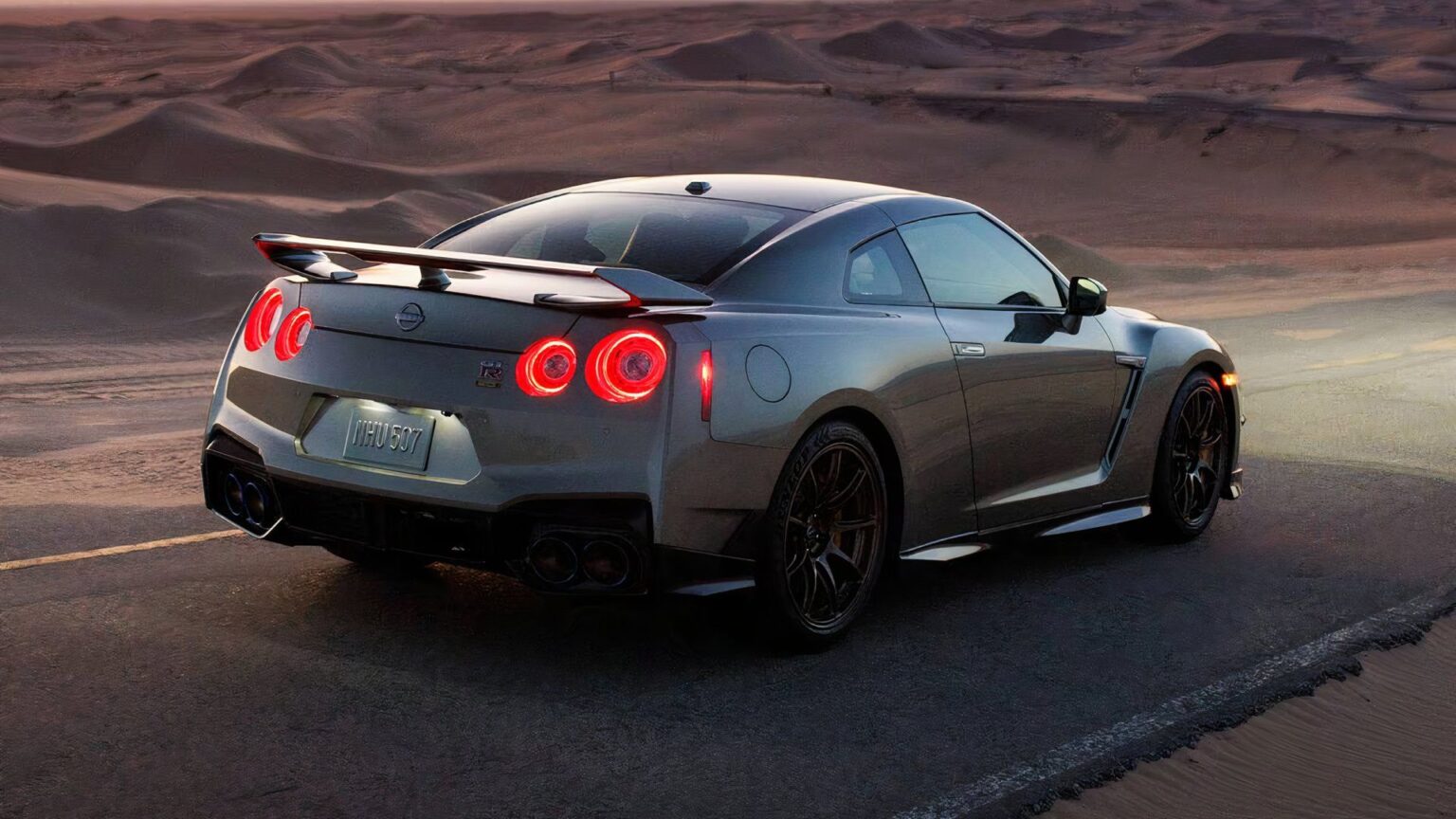Nissan sports car fans have no fear, the GT-R isn’t going anywhere. That is, according to Motor1, who exclusively and recently sat down with Nissan USA’s head of product planning, Ponz Pandikuthira at the New York International Auto Show. In the interview, Pandikuthira confirmed with the outlet that Nissan is still very adamant about making a next-generation GT-R. Not only is it the automaker’s most iconic sports car, it’s also a major staple for the Nissan brand as one of its signature halo cars.
Nissan may have recently discontinued the outgoing GT-R. But that doesn’t mean Godzilla is six feet under for good. When rumors began signaling the end of the “R35” generation GT-R, more rumors began surfacing suggesting Nissan was going to succeed the model with a new one. Now, with the latest updates, it appears those rumors are holding true.
Key Takeaways
- Godzilla isn’t dead
- Nissan is still working on a new, next-gen GT-R
- The new GT-R won’t go full-electric as originally anticipated
- Nissan still wants to dethrone the Porsche 911 Turbo
The Next-Gen GT-R Will Be Electrified In Some Way
Originally, the rumormill suggested the next-gen GT-R would go all-electric. At the time the rumors began surfacing, the industry was at the height of its initial push towards all-electric lineups to meet federal mandates scheduling the ban on sales of internal-combustion-powered vehicles.
But that was some time ago, and the market for EV’s spoke loud and clear: they’re not as hot and electrifying as many had anticipated. As a result, word is the new GT-R won’t go full-electric. However, according to Pandikuthira, it would be electrified in some way, suggesting gas-electric hybridization might be the next-gen GT-R’s new bag.
Furthermore, Nissan is still treading very carefully on how to plan the new GT-R’s construction, with Pandikuthira emphasizing the importance of sticking to the original car’s formula. That means a rear-wheel-drive-based platform with all-wheel drive, and a new force-fed (likely turbocharged) gas-powered V-6.
“It’s a matter of where the tech catches up with us. Battery tech, motor tech, and it may take us a few years, but GT-R will be back, without a doubt.”
– Ponz Pandikuthira, Nissan USA Head Of Product Planning
Nissan Is Keeping The Porsche 911 In Its Sights As GT-R’s Arch Rival
Like the outgoing R35 GT-R, Pandikuthira said that Nissan engineers are still keeping the latest Porsche 911 Turbo as its arch rival and benchmark. And that’s because the post-millenial GT-R has always held the 911 Turbo as its ideal target, with the metric of comparison being a record-setting time lapping the Nürburgring Nordschleife.
When the R35 GT-R debuted, it shocked the world by lapping the infamous Nordschleife quicker than 7:30, a phenomenal record given the then-new GT-R’s relatively affordable and below-six-figure price tag at the time.
But in order to achieve this goal and keep the 911 Turbo in its sights, Nissan knows big power still needs to be a major requirement in the next-gen GT-R’s tech roster.
“Number one, it has to be a very authentic car,” Pandikuthira told Motor1 during their interview. “Imagine if you did a front-wheel-drive electric car and called it a GT-R. Good luck, right? It needs to be authentic to its roots, and it needs to have a Nürburgring performance record. That’s what established the car’s cred, that it beat a Porsche 911 on its home turf. That needs to hold good.”
However, he also said Nissan has its greatest challenges yet, when it comes to figuring out how the new GT-R will take shape. The biggest challenges: emissions compliance, battery tech, and other electrified vehicle issues such as weight.
“Those big horsepower cars are simply not going to meet emissions standards,” Pandikuthira continued. “So it’s a matter of where the tech catches up with us. Battery tech, motor tech, and it may take us a few years, but GT-R will be back, without a doubt.”
Thankfully, Nissan still has a twin-turbocharged V-6 in its arsenal, in the form of the latest VR-family of V-6s, which is literally a descendant of the outgoing GT-R’s original VR38DETT 3.8-liter twin-turbo V-6. While the R35 GT-R’s engine introduced the VR V-6, Nissan essentially spun off a new-generation family of V-6 engines off of the GT-R’s VR38DETT, all in an effort to replace the tried, tested, true, but aging VQ-family of V-6s.
Today, the latest version of the VR is found in the Nissan Armada/Patrol and its Infiniti cousin, the QX80. It’s called the VR35DDTT, displacing 3.5 liters while punching out 425 and 450 horsepower and 516 pound-feet of torque. Another version of the VR came in the form of a 3.0-liter version, which powers the last versions of the Infiniti Q50 sedan and Q60 coupe. The 3.0-liter VR30DDTT version still exists today, powering the latest RZ34 Nissan Z sports coupe.
TopSpeed’s Take
We’re excited to know that Nissan is still adamant about keeping Godzilla around. But more so, we’re even more excited to hear it may potentially stick to internal combustion power to some degree. Though, we’re also still very curious as to how Nissan engineers will proceed with maintaining the GT-R as the performance icon that it is for the new generation.
Read the full article here


